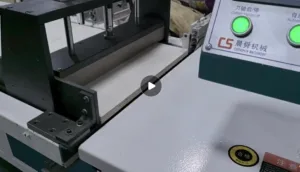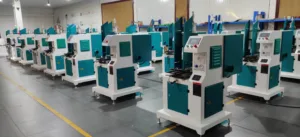How to Make Wooden Cup Lids for Glass Jars: A Guide for Bamboo and Wood Manufacturers

Wooden cup lids have become increasingly popular due to their eco-friendliness, aesthetic appeal, and durability. As consumers demand more sustainable and stylish alternatives to plastic lids, the market for wooden lids has seen significant growth. For bamboo and wood manufacturers, producing these lids offers a valuable opportunity to meet market demands while promoting environmentally conscious practices.
‘How to Make Wooden Cup Lids for Glass Jars’ This guide focuses on the professional manufacturing process of wooden cup lids for glass jars, leveraging automated machinery to achieve precision, efficiency, and scalability.
Materials and Machines Needed
Material Selection
Wood Types: Maple, oak, bamboo, or other sustainable wood options are ideal. Emphasis should be placed on sourcing materials responsibly to align with eco-friendly practices.
Machines Required
- CNC Cutting Machine: For precise wood block preparation.
- Wood Copy Shaper Machine: For shaping the wooden block into a lid.
- CNC Drilling Machine: For creating holes that match the jar’s requirements.
- CNC Thread Milling Machine: For milling threads to ensure a secure fit with the jar.
- Wood Polishing Machine: For sanding and polishing the lid to achieve a smooth finish
Step-by-Step Manufacturing Process
Step 1: Design and Preparation
- Design Specifications: Begin with detailed design drawings that outline dimensions, thickness, and aesthetic features of the lid to ensure compatibility with the glass jar.
- Wood Block Cutting: Use a CNC cutting machine to cut the raw material into blocks of the desired size for further processing.
Step 2: Shaping the Lid on a Wood Copy Shaper Machine
- Machine Setup: Place the wood block on the automatic feeding rack of the wood copy shaper machine.
- Shaping Process: Using molds, the machine precisely shapes the wood into the desired lid form. Decorative textures, such as engravings or patterns, can also be added during this step.
Step 3: Drilling the Hole on the CNC Drilling Machine
- Drilling: Set the CNC drilling machine with the appropriate diameter bits to create a hole that fits securely with the glass jar’s opening.
- Precision Check: Verify dimensions to ensure a tight seal and proper fit.
Step 4: Milling the Thread on the CNC Thread Milling Machine
- Parameter Setup: Measure the jar’s thread specifications, including thread pitch, diameter, and spacing. Enter these parameters directly into the machine’s control system.
- Thread Milling: The machine mills threads that ensure a secure and functional lid-to-jar connection.
Step 6: Finishing
- Coating: Apply food-safe finishes such as beeswax, mineral oil, or clear lacquer to protect the wood and enhance its natural beauty.
- Drying and Quality Inspection: Allow the lids to dry naturally and conduct a final quality check to ensure they meet all specifications.
The production of wooden cup lids for glass jars is an innovative process that combines craftsmanship with modern technology. By utilizing automated machinery, bamboo and wood manufacturers can achieve high precision, enhanced efficiency, and consistent quality. This approach not only meets growing market demands but also supports sustainable manufacturing practices.
Share To:




